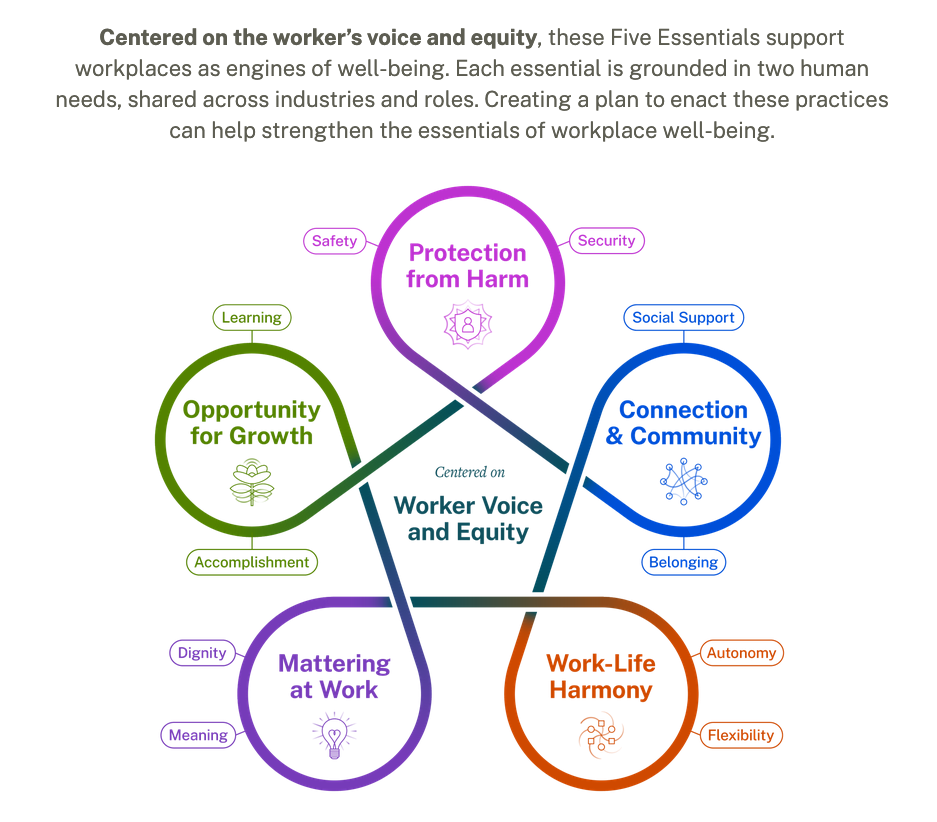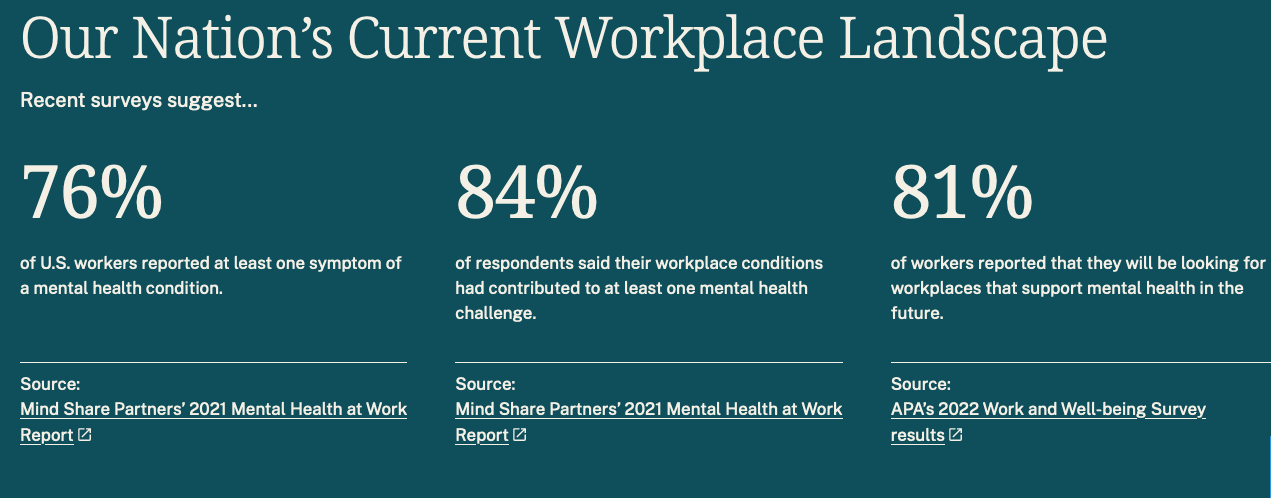The U.S. Department of Health and Human Services (HHS) dropped a new framework for mental health in the workplace and workplace well-being this week. Let’s unpack it.

Taking cues from positive psychology, organizational psychology, and recent trends in the workplace and in organizational research that have demonstrated that a burnt out, sick workforce has a direct negative impact on the company bottom line and productivity as well as on employees personally, the U.S. Surgeon General has prioritized five main pillars of workplace well being:
- 1. Protection from Harm
- 2. Connection and Community
- 3. Work-Life Harmony
- 4. Mattering at Work
- 5. Opportunities for Growth
I am encouraged by all of this.
Placing protection from harm front and center while calling out the need for both psychological and physical safety in the workplace first sends a clear message. It’s time to advance your inclusive business practices to include mental health, neurodivergence, and disability as well as gender, race, and other marginalized groups – and to work harder to take these DEIA policies off the page and into live practice in your business.
The Surgeon General also calls out the need for rest, specifically. In a time when wages are not keeping up with price gouging, people are having to work multiple jobs to make ends meet, and getting adequate rest is proving to be a challenge. Add in the fact that the U.S. does not offer adequate care for families or the people they care for: the elderly, disabled, sick, and children, and getting enough rest becomes even more elusive. This report doesn’t address the policy changes needed at the national level to improve care; however, it does address some of the ways in which companies contribute to the problem for their employees – a good start.
I would have put work-life harmony second on this list. Note that framing it that way (instead of the more restrictive and company-first, person-last ‘work-life balance’) is fantastic. This framing acknowledges that life should come before work, and that we should work to live, not live to work. The Surgeon General calls out autonomy at work, flexible schedules that are predictable, access to paid leave, and boundaries between work and home life as essential components of this.
The next two points, connection and community and mattering at work, are closely related. Humans need to work with people we can trust in an environment that makes us feel included in order to collaborate and work as a cohesive team. You’re not going to get that connection and community from a pizza party on Fridays or from promoting toxic leaders. It’s got to come from company leadership leading with empathy first, listening to employees, and treating them with care and respect.
[wpdiscuz-feedback id=”jz0s6zsmg0″ question=”What do you think would be the best way for companies to incorporate connection and community and mattering at work in the workplace?” opened=”0″][/wpdiscuz-feedback]Dovetailing with this is mattering at work. Employees need a living wage, no matter what their job is. They need to be involved in company decisions; when they can’t be directly involved, they need to be informed and engaged as early as possible to keep them aligned and show they are respected. Gratitude and sincere recognition are big parts of making that work, as is having a clear company mission people can connect with.
That brings us to opportunities for growth. Here is where a culture of empathetic leadership can shine, providing the level of training, mentoring, and continuing education your team needs to thrive. Showing them a clear path to career growth (if they want linear career advancement into management) and providing them a way to be understood as a pillar of support within the company (if they don’t want typical linear career advancement).
I want to call out the feedback aspect of opportunities for growth. Empathetic leaders do not give gendered feedback, nor do they hold feedback over employees heads like a cudgel. The report does not specify any specific feedback method, but I want to weigh in with my psychology hat on and encourage leaders to give feedback in a specific way:
- Give feedback year round. Don’t hold it until a yearly or quarterly review. The time for feedback is when the issue or opportunity for growth is happening, not in an ambush months later when the team member thinks all has been fine all year.
- Give specific feedback. Don’t talk to women, neurodivergent employees, or employees of color (or even the average man, though men getting this ‘feedback’ is much more rare) about anything not tangible. Talking to someone about “their tone” would fall into this category as an example. If it’s not related to the work product they produce, it’s not good feedback to give.
- Give more praise (year round!) than you give feedback. Praise in public, give feedback in your one-on-ones. This helps foster trust and respect.
- Offer the kind of safe environment where employees can also give feedback to management without fear of reprisal.
- Acknowledge the improvement someone makes after feedback.
Overall, I think this new framework with five essentials for business and workers to thrive is excellent, and I hope that companies incorporate these best practices for better employee health and mental health and the stronger companies that will create.
This is also published on my LinkedIn page
#organizationalpsychology #mentalhealth #wellbeing




